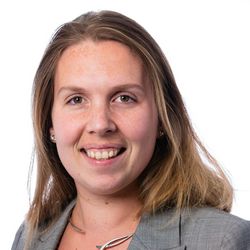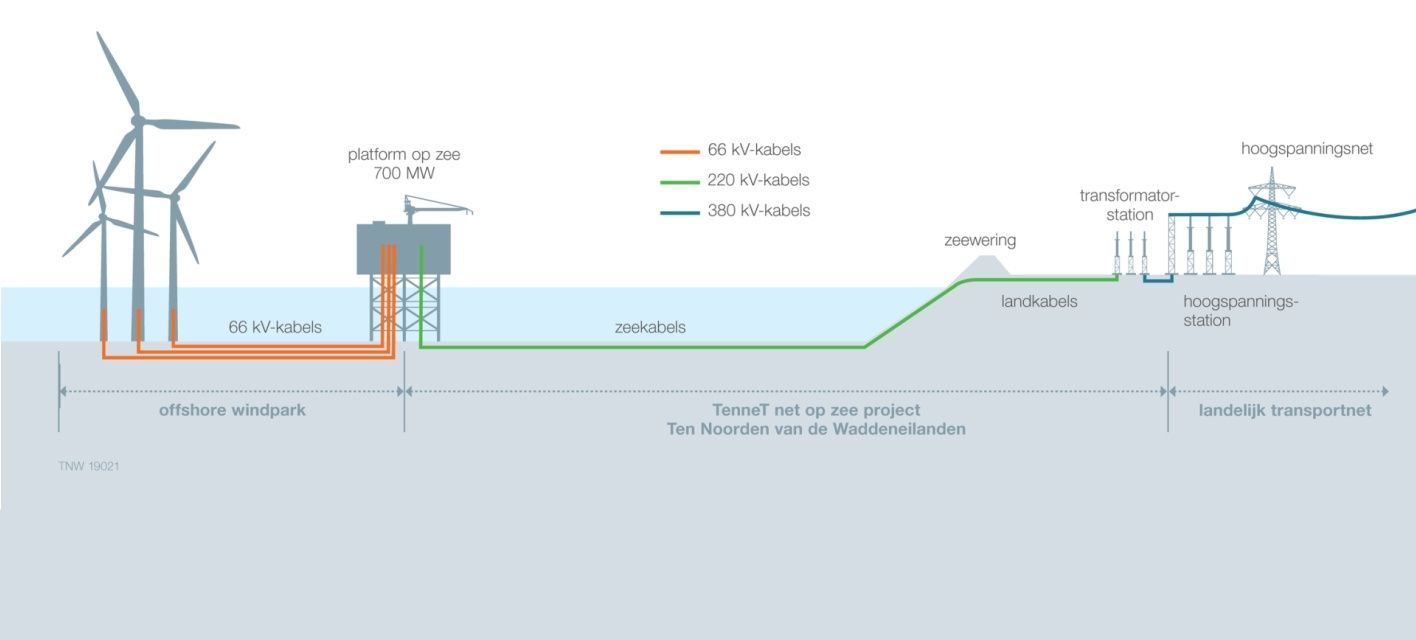Connecting wind farm Ten noorden van de Waddeneilanden to Dutch high voltage grid
The ‘Net op zee Ten noorden van de Waddeneilanden’ (NOZ TNW) project will connect the new wind energy area Ten noorden van de Waddeneilanden to the Dutch high voltage grid. This area generates around 700 MW of power.
An AC high voltage connection will supply the sustainably generated electricity to the Dutch high voltage grid. This involves an offshore platform, two underground cable circuits and an onshore transformer station. The total length of the cable route ranges between 95 and 120 kilometres, depending on the chosen route. Watch TenneT's animation about this project.
Connection to Eemshaven
For the connection, TenneT is looking for the most desirable route to one of the following three locations: Burgum (Friesland), Vierverlaten (Groningen) or Eemshaven (Groningen). Three alternatives are being investigated for each connection location. Six sites are also being investigated for the realisation of a new transformer substation. Besides considering the environment, arguments related to technology, costs, surroundings and future-proofness also play a role. This will all be incorporated in the Integral Impact Analysis (IEA). This document presents the most important decision information from all the construction sites. The Minister of Economic Affairs has since announced (video) that the Eemshaven connection is the preferred alternative. The project must be completed in 2026 so that the wind energy area can supply the delivered energy on time.
Witteveen+Bos is performing the following work for the NOZ TNW:
- Development of route alternatives
- Drawing up NRD and EIA
- Drawing up integral effect analysis (IEA)
- Creating interactive project website (https://netopzeetnw-inbeeld.nl/)
- GIS
- Permit applications
- Environmental management
- Technical development of route alternatives
Multidisciplinary cooperation
NOZ TNW is an extensive and complex project in which Witteveen+Bos works together with many different disciplines, both internally and with TenneT and the Ministry of Economic Affairs. Good communication and ensuring integrality are a challenge. We monitor progress with weekly core team meetings, LEAN planning sessions and regular phone calls with specialists. After working together for two years, the team respond well to each other. The participation of residents and stakeholders is implemented in the spirit of the pending Environment and Planning Act. Particularly during a pandemic, it is a challenge to keep everyone engaged. This was therefore partially done digitally, also using the InBeeld app developed by Witteveen+Bos.
Now that the Minister has announced the preferred alternative, Witteveen+Bos can start developing this alternative for the zoning plan and the permit applications.
More information?

